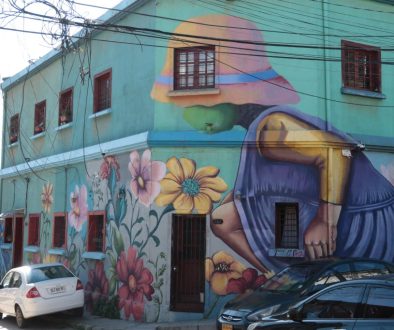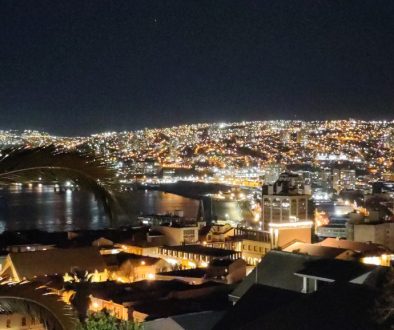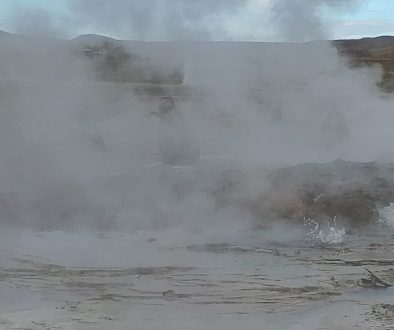To the clouds
I needed to leave town. I’m not a city girl, as you probably know by now. I wanted to go up into the mountains. One option was to go with the Train to the clouds. Cashing tourists, you might say. It is. It’s way to expensive, for the average. For the region, it is a way, to get money into… whom’s wallet? The guide in the train sounded like it would be used to develop a standard passenger line on the track. Right now, just 22km are open to the public (the tourists). The railway, basically, is used for freight trains to Chile, three times a week. Not safe enough for passengers.













We started with 4 buses in Salta. Accompanied with rangers and ambulances. Thinking about the altitude, we will reach and the distance to the nearest medical spot… it makes sense. And explains, partly, why the tickets are so expensive.
On the way to the train, we stopped at several places: a rail-bridge with a somewhat special construction, a former train station, which is now a market. And breakfast place for the tourists. Some miradors, the only secondary school in the area (because of her history) which also served as lunchspot – pastries made by the cooking graduates. The landscape changed on our way up to the train station. First, hills with the usual vegetation, then higher mountains, more try climate, with cactuses, later only gras and lower vegetation. The wind from the east with some humidity reaches only the first range of mountains. After that, it’s deadly try. And still, people live here, lived here already pre-Inka. Harsh!
About the secondary school in Corrillos: Founded by a priest, witch saw the importance of education the youth. In the villages in the mountains you only find primary schools. That’s the education everybody can have. After that… you would need the money to send your child, your children to the city. Just not an option. Nowadays, the one and only secondary school gives children the opportunity for some further development. Courses they can take are: environment, touristic, food and cooking, administration, theology. This really gives back to the villages and the region.
In San Antonio, we changed from bus to the train. Of course, at the train station was a market with regional products. In the train, up to the highest point of the track, people got an explanation about the history, the geology and nowerdays use of the region. In Spanish. The English version was 3 times a 3 minute summary of that. Therefore, you pay $100 extra. You don’t miss much, if you spare these extra costs.
The highest point is a brigde with a soft bend. People lean out of the window to make a panoramic view of themself. After the bridge, the trains stops and goes back downhill. People in the train switch sides, thus the once on the hillside are sitting at the valley side downhill and have the same chance for their panoramic shots. Easy solution.
Next to the brigde, at the stopping point, a little market. The staff held a short Pachamama ceremony (with flag and all… is that authentic? Or is it more about the fact than the how?) After a short break here, we got back on the train and back to the busses. The people from the market packed their unsold things and started to walk. I wondered where they would go. There is no settlement, there is nothing up here. Do they walk back for 22km? With all the luggage? The nearest road was about 300m straight down. Should they?
Our busses stoped after about 800m, in San Antonio … at a little market and restaurant. Time for a late lunch or early dinner. The lady, whom was sitting next to me in the bus, sat alone at a table. I asked her, if it was okay to join her for the meal. She seemed to be delighted. We talked a lot, about our lives, livechoices, travels and wishes. Originaly, she was from Vietnam, spend most of her life in the states and moved now to Guatemala, started teaching Vienamese cooking to support women to get on her feet.
Back in the bus, she went straight to sleep… couldn’t handle the altitude that well.
Our last stop was in Santa Rosa de Tastil. We hadn’t enough time to see the precolombian ruins, but there was a Pachamama ceremony in town. The whole village was dressed up. Interesting to watch.
Basically, we stopped in every village along the route, every village was given the chance to get some value out of the travellers in their region, without any overcommercialised influence. Better than elsewhere.




